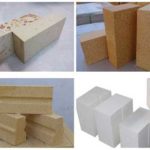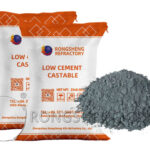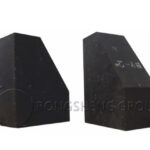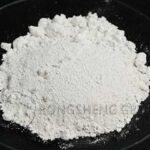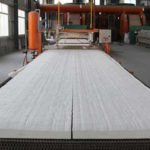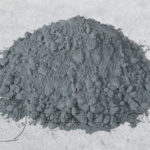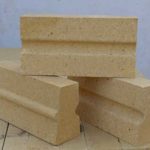When it comes to beryllium oxide, its toxicity is its distinguishing feature. Although beryllium oxide is toxic, beryllium oxide ceramics are not toxic. Beryllium oxide is widely used in special metallurgy, vacuum electronics technology, nuclear technology, microelectronics and optoelectronics technology, and other fields because of its high thermal conductivity, high insulation, low dielectric constant, low dielectric loss, and good process adaptability.
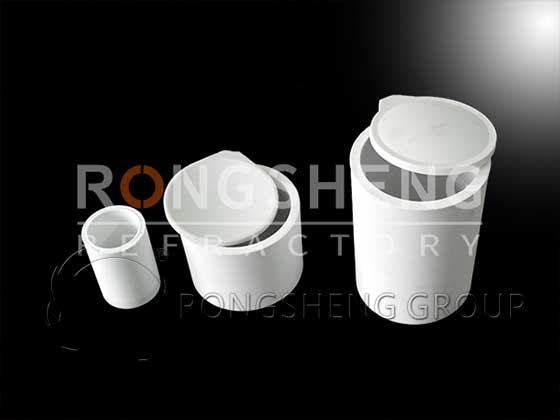
Characteristics of Beryllium Oxide Ceramics
As a new type of ceramic material, BeO has the advantages of high hardness, high-temperature resistance, good thermal conductivity, low dielectric constant, low dielectric loss, good insulation, and good chemical stability compared with other ceramic materials. Beryllium Oxide Ceramics for Sale. It is widely used in nuclear technology materials, special metallurgy, vacuum electronic technology, and other fields.
In the field of nuclear technology materials, BeO is used as anti-radiation material and neutron moderator in nuclear reactors due to its high neutron scattering cross-section and high-temperature resistance. In the field of vacuum and electronic technology, BeO is a good material for the manufacture of jet tubes due to its high-temperature resistance and strong thermal shock resistance. BeO is used to manufacture broadband and high-power electric vacuum devices due to its high thermal conductivity, low dielectric constant, and low dielectric loss.
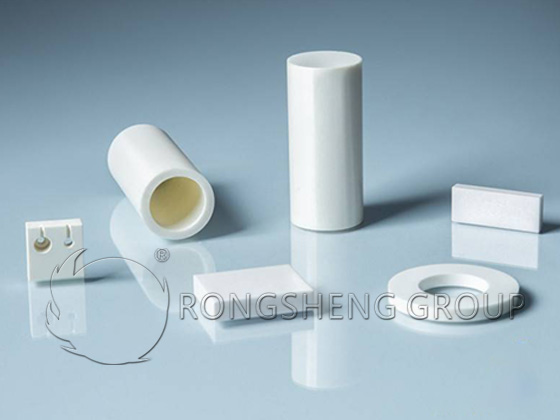
Application of Beryllium Oxide Ceramics
Application in refractories
As a refractory material, beryllium oxide ceramics can be used for refractory support rods, protective shields, furnace linings, thermocouple tubes, cathodes, heater heating substrates, and coatings of heating elements.
Coating an appropriate thickness of beryllium oxide ceramic protective layer on the inner wall of the arc tube of the high-intensity discharge lamp (metal halide lamp) can avoid a large amount of damage to the metal part of the metal halide filling. This results in a substantial formation of free halogen, thereby prolonging the effective service life of the lamp.
The most prominent advantage of beryllium oxide ceramics as a high-grade refractory material is its excellent thermal shock resistance. The evaluation theory of thermal shock resistance can be based on two categories: thermoelasticity theory and fracture mechanics theory. Its thermal shock conditions can be divided into rapid heating or cooling, slow heating or cooling, radiation heating, heating creep, etc.
Therefore, BeO ceramics, as a refractory material, can be made into BeO ceramic crucibles. BeO ceramic crucibles can be used for melting rare and precious metals. Especially in metals or alloys that require high purity, the working temperature of BeO ceramic crucibles can reach 2000 °C. Due to its high melting temperature (2550 °C) and high chemical stability (alkali), thermal stability, and purity, BeO ceramics can be used for molten glaze and plutonium.
Applications in high-power electronic devices and integrated circuits
High thermal conductivity and low dielectric constant are important reasons why BeO ceramic materials are widely used in the field of electronic technology. BeO ceramics are currently used in high-performance, high-power microwave packages, high-frequency electronic transistor packages, and multi-chip components with high circuit density.
BeO substrates can operate at frequencies up to 44GHz and are used in communications, direct broadcast satellites, mobile phones, personal communication services, base stations, satellite reception and transmission, advanced avionics, and global positioning systems (GPS).
BeO ceramics are also widely used in broadband and high-power electronic vacuum devices, such as energy transmission windows of traveling wave tubes, clamping rods and step-down collectors. Low dielectric constant and loss are beneficial to obtain good broadband matching characteristics. At the same time, power loss can also be reduced. High thermal conductivity can conduct heat generated in high-power devices in a timely manner, thereby ensuring the stability and reliability of the device.
In the past, the research and development of electronic devices mainly focused on performance design and mechanism design, but now more attention is paid to thermal design. The technical problems of heat loss of many high-power devices have not been well resolved. Beryllium oxide (BeO) is a ceramic material with high electrical conductivity and low dielectric constant, which makes it widely used in the field of electronic technology. At present, BeO ceramics have been used in high-performance, high-power microwave packaging, high-frequency electronic transistor packaging, and high-circuit density multi-chip components. The heat generated in the system can be dissipated in time by using BeO material to ensure the stability and reliability of the system.
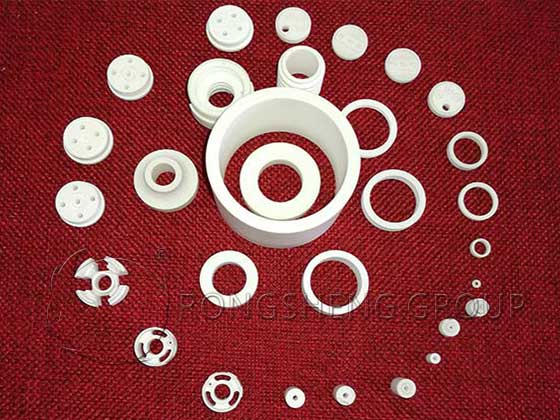
Applications in Nuclear Reactors
BeO can be used as a neutron moderator and anti-radiation material in atomic reactors. Under the action of neutron radiation, BeO ceramics may undergo gas expansion and cracking, depending on the accumulation of helium and tritium. In addition, BeO ceramics have better high-temperature radiation stability than metal beryllium. The density is higher than metal beryllium, and it has quite high strength and thermal conductivity at high temperatures. Moreover, beryllium oxide is cheaper than metallic beryllium. This makes it more suitable for use as reflectors, moderators, and dispersed-phase fuel substrates in reactors.
Nuclear engineers at Purdue University have developed a new type of nuclear fuel that interweaves uranium oxide with beryllium oxide, which conducts heat better, to make fuel pellets. In the fuel pellets, the beryllium oxide “backbone” enables the fuel to conduct heat at least 50 percent better than conventional nuclear fuel.
Ceramic materials are one of the most important materials in nuclear reactors. In reactors and converters, ceramic materials are irradiated by energetic particles and beta rays. Therefore, in addition to high-temperature resistance and corrosion resistance, ceramic materials also need to have better structural stability. Neutron reflectors and moderators for nuclear fuel are usually made of beryllium oxide, B4C, or graphite. The high-temperature radiation stability of beryllium oxide ceramics is better than that of metal, the density is higher than that of beryllium metal, the strength at high temperatures is better, the thermal conductivity is high, and the price is cheaper than metal beryllium. All these excellent properties make it more suitable for use as reflectors, moderators, and dispersed phase combustion aggregates in reactors. Beryllium oxide can be used as control rods in nuclear reactors, and can also be combined with U2O ceramics as nuclear fuel.
Applications in dosimetry
BeO single crystal and large-grain BeO ceramic materials also have the characteristics of spontaneous radiation and external electron emission during cooling, heating, and illumination. Beryllium oxide ceramics have attracted much attention in dosimetry because of their thermoluminescence (TL) and optical luminescence (OSL) properties. When BeO is used in a non-toxic ceramic form, it is a highly stable material with chemical, mechanical and thermal properties. Single crystal BeO is non-toxic, which makes it an important place in the field of personal dosage.
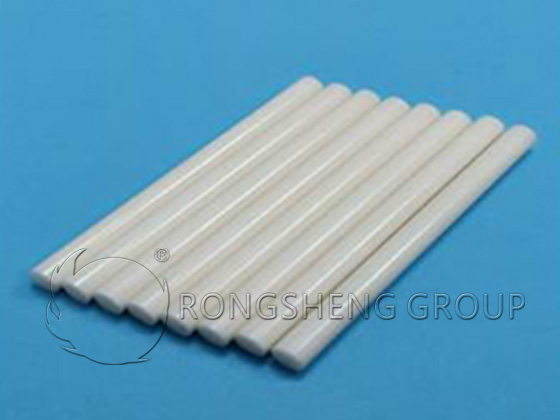
Other applications
The applications of BeO ceramics are manifold. At present, large-sized single crystals can be produced, and have some special optical properties. Transparent beryllium oxide ceramics can also be prepared as observation windows in special fields. Be, Ta, Mo, Zr, Nb and other metals are used to make cermet products with specific linear expansion coefficients and special thermal properties. High-purity beryllium oxide ceramics can be used to make rocket head cones, plasma arc nozzles, and missile rocket parts.
The thermal conductivity of BeO ceramics is good, which is two orders of magnitude higher than that of commonly used quartz, so the efficiency of the laser is high and the output power is large. Compared with quartz tubes, it has great advantages and is easy to miniaturize, so it has broad application prospects in the laser field.
BeO ceramics can be added as a component to glasses of various compositions. Glass containing beryllium oxide can pass through X-rays, and X-ray tubes made of this glass can be used for structural analysis and used in medicine to treat skin diseases. BeO can be added as an ingredient to various compositions of glass. Beryllium oxide can affect the properties of glass, such as increasing the specific gravity, water resistance, and hardness of the glass, and improving the expansion coefficient, refractive index, and chemical stability. It can be used not only as a special glass component with a high dispersion coefficient but also as a glass component that transmits ultraviolet rays.
RS Beryllium Oxide Ceramic
We, RS, mainly produce beryllium oxide, boron nitride, silicon carbide ceramic, corundum mullite ceramic, A-75 ceramic, A-95 ceramic, A-96 ceramic, A-99 ceramic, and other ceramic products, which are widely used in aerospace, microelectronics, optoelectronics, communications, electric vacuum, and power electronics industries, among which the production technology of beryllium oxide ceramics represents the highest level in China, and the product performance indexes reach the world advanced level.
Technique Data of RS Beryllium Oxide Ceramics
| Item | Test Conditions | Specification | Unit | |
| B-97 | B-99 | |||
| Dielectric Constant | 1MHz | 6.9士0.4 | 6.9士0.4 | |
| (10士0.5)GHz | ||||
| Dielectric Loss Tangent | 1MHz | ≤4X 10-4 | ≤4X 10-4 | |
| (10士0.5)GHz | ≤8X 10-4 | ≤8X 10-4 | ||
| Volume Resistivity | 25℃ | ≥1014 | ≥1014 | Ω.cm |
| 300℃ | ≥10″ | ≥10″ | ||
| Breakdown Strength | D C | ≥15 | ≥20 | kV/mm |
| CMOR | – | ≥170 | ≥190 | MPa |
| Average Linear Expansion Coefficient | 25℃~500℃ | (7.0~8.5)*10-4 | (7.0~8.5)*10-4 | I/K |
| Thermal Conductivity | 25℃ | ≥200 | ≥240 | W/m.K |
| 100℃ | ≥160 | ≥190 | ||
| Thermal Shock Resistance | 0℃-800℃ | There should be no cracks | ||
| Bulk Density | ≥2.85 | ≥2.85 | g/ cm3 | |
| Chemical Stability | 1:9HCL | ≤0.3 | ≤0.3 | Mg/cm2 |
| 10% NaOH | ≤0.2 | ≤0.2 | ||
| Air Tightness | – | ≤10*10-11 | ≤10*10-11 | Pa. m3/s |
| Average Grain Size | – | 12~30 | 12~30 | μm |
Current Situation of Beryllium Oxide at Home and Abroad
The United States is the country with the largest output of BeO ceramics, the highest production technology, and the best product performance in the world. The research direction of BeO ceramics is mainly divided into the research of conventional BeO ceramics, the research of high-strength BeO ceramics, and the research of high thermal conductivity beryllium oxide ceramics. The performance level of BeO ceramics developed in the United States is very high. Its conventional BeO ceramics can guarantee that the average grain size is ≤15μm, the flexural strength is ≥225MPa, the relative dielectric constant is 6.67, and the batch consistency is very good.
For high-strength BeO ceramics in the United States, its flexural strength has reached more than 260MPa, and for high-thermal conductivity BeO ceramics, its thermal conductivity has also reached 325W/m·K.
Over the years, the development and production of BeO ceramics in China have been continuously explored and practiced, and a set of beryllium oxide production technology with independent innovation and independent intellectual property rights has been formed.
Most of the performance indicators of domestically produced BeO ceramics are close to foreign standards. However, there is still a certain gap with foreign countries in the batch consistency control of indicators. Further research is needed to meet the high consistency and high-reliability requirements of products in the field of vacuum electronics.
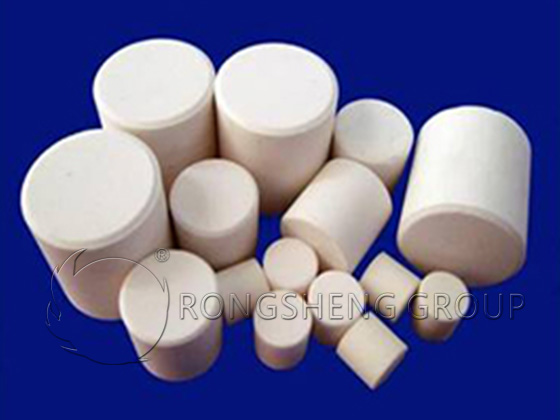
Development of Beryllium Oxide Ceramics
Beryllium oxide ceramics are different from other electronic ceramics. So far, its high thermal conductivity and low loss characteristics are difficult to replace with other materials. All in all, beryllium oxide ceramics are not toxic. After it is sintered into a solid block of ceramics, the toxicity “disappears” and is safe for use. Its sintered products play an irreplaceable role in specific fields. Although it is still a relatively unfamiliar material in the civilian market, people are a little bit “turned pale by smelling beryllium”. However, compared with other high thermal conductivity materials, beryllium oxide ceramics still have advantages in terms of cost performance. Its excellent performance has not been fully excavated and applied. Over time, when its safety can be further guaranteed and its cost can be further reduced, it should be able to exert more capabilities.
Leave Your Requirements on RS Kiln Refractory Bricks And Castable Materials! We Will Reply You In 12 Hours!:
